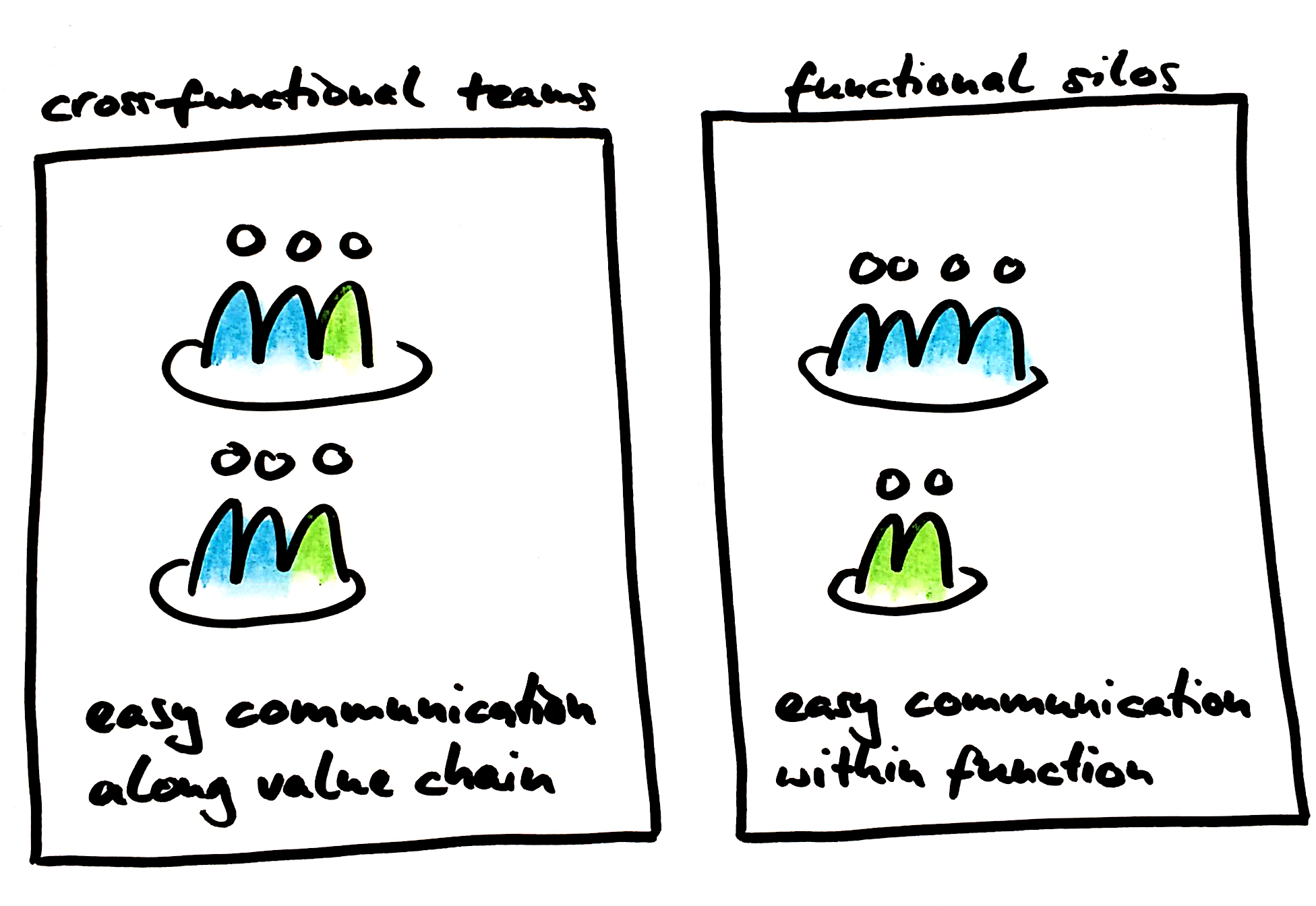Development process
We work in cross-functional teams. In general, decisions about team composition involve trade-offs between communication made easy and communication made difficult. Cross-functional teams optimise in favour of easy communication across functions (or roles) and along value chains and against easy communication between people with the same function. Functional silos, as the name suggests, optimise the other way. Our assumption behind favoring cross-functional teams is that the improved communication along the value chain is overall more effective, even though individuals might be less efficient in their function.

Teams work with processes that are heavily influenced by Scrum and other Agile and Lean processes. This puts a lot of emphasis on autonomy and self-organization. For instance, team members are supposed to pull new work when they have free capacity, rather than having tasks assigned to them. If you worked at a more traditional command & control organization before, this might take some getting used to. We are convinced though, that you eventually will find this way of working more fulfilling and motivating.